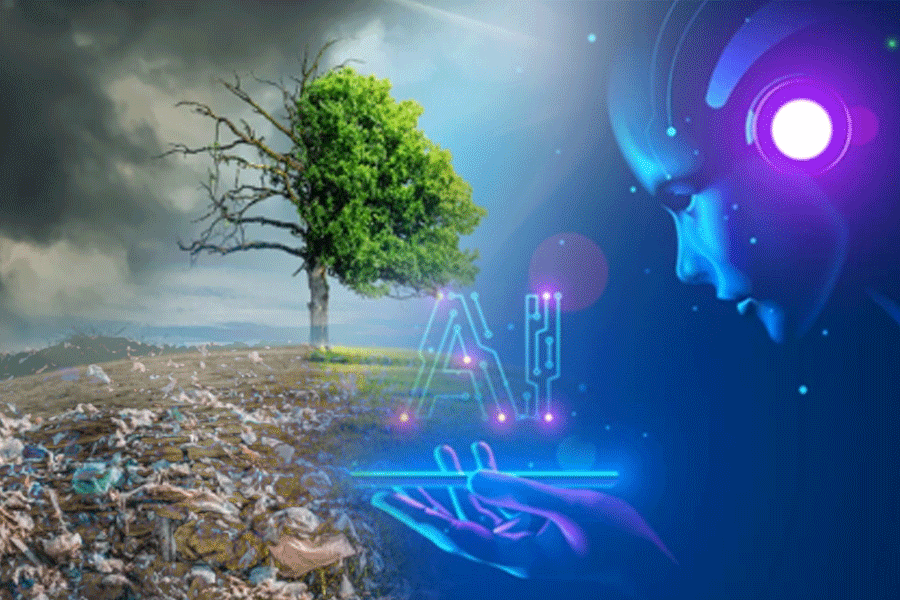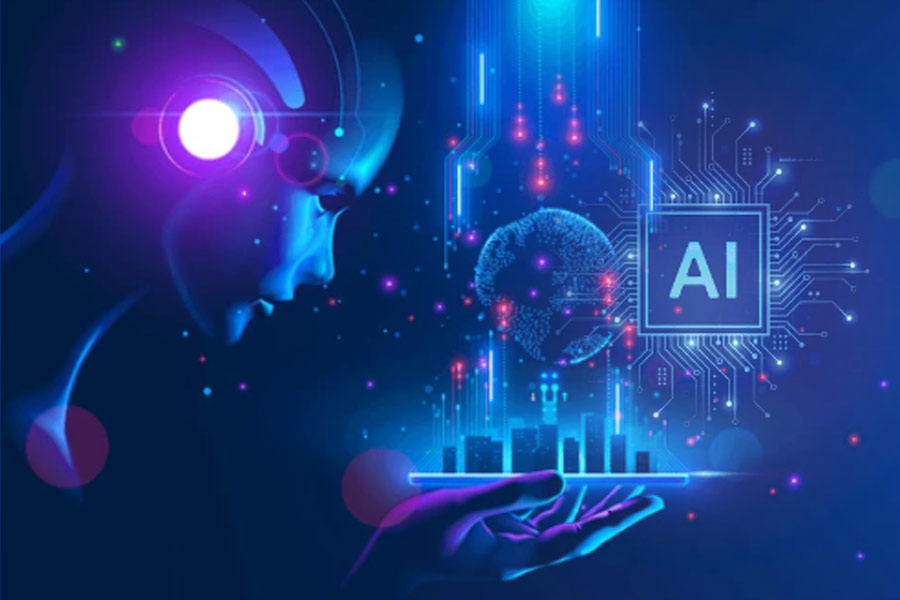Artificial intelligence (AI) has revolutionised our lives in myriad ways, from personalising our social media feeds to giving us driving directions and monitoring our health.
In recent years, hopes have grown that AI may also help humanity tackle global environmental problems such as climate change.
AI involves using computers to make them think like humans. It can solve complex problems and process huge amounts of data.
But the technology brings with it a host of environmental costs. Here, we weigh up the pros and cons.
4 ways AI can help the natural world
Energy efficiency AI systems can control and optimise energy use. For example, AI-powered “smart grids” monitor and manage electricity generation to meet the demand of consumers, which can both lower energy costs and allow for more efficient energy use.
AI can also help streamline the energy used by big commercial and industrial systems. Tech giant Google, for instance, used AI to cut the amount of energy required to cool its data centres by 40%.
Urban Infrastructure Waste management systems driven by AI may help increase recycling rates. In the United Kingdom, for example, recycling company Recycleye uses AI to identify materials for sorting, lowering contamination rates and increasing recycling volumes – and so, reducing pressure on landfill.
And AI-powered “smart cities” technologies help make public transport systems work more smoothly, which can reduce congestion and minimise vehicle emissions.
Artificial intelligence can also be deployed to improve air quality in cities. IBM, for example, uses the technology to analyse weather and air pollution data from sensors and satellites. This can help authorities pinpoint pollution sources, make air quality forecasts and issue health alerts.
Sustainable agriculture
AI-powered smart machines, robots and sensors are already used in agriculture.
They can provide real-time monitoring of weather, soil conditions and crop needs, leading to better water use and ensuring crops receive only what they need.
The technology can also identify pests, reducing the need to spray chemical pesticides on crops.
As climate change worsens, there are hopes AI can help farmers avoid reduced crop yields and become more resilient.
Environmental monitoring
AI systems can forecast floods, bushfires and other natural hazards quickly and accurately. This can minimise the effects of natural hazards on both the environment and communities.
AI can be used to track environmental change. For example, it can reportedly measure changes in icebergs 10,000 times faster than a human can.
Meanwhile, environmental group The Nature Conservancy uses AI to minimise the environmental impacts of hydropower across the Amazon.
But what about the downsides?
The path to realising the potential of AI is fraught – and the technology comes with several major downsides, as outlined below.
Energy use
Artificial intelligence guzzles a huge amount of energy. First the computer models must be “trained”, or fed a large set of data. This feeding can be relatively quick, or take up to several months – during which time big data processors are running 24/7.
And when we ask AI to solve a problem, this also requires processing power which consumes energy. Advanced AI models such as ChatGPT reportedly use ten times more energy per search than a conventional Google search, according to one estimate. Only a small fraction of this demand is met by renewable energy sources.
The International Energy Agency projects electricity consumption from data centres, AI and cryptocurrency sector could double in the four years to 2026, from 460 terawatt-hours in 2022 to more than 1,000 terrawatt-hours in 2026.
By comparison, total electricity generation in Australia in 2022 was around 273 terawatt-hours.
Greener AI systems are urgently needed – and this is looking increasingly possible. Studies have shown the energy use of AI-based computer models can be slashed through various means, such as reducing a model’s complexity without affecting its performance.
Water impacts
The water requirements of AI are significant. The data centres housing powerful AI servers generate a lot of heat. Water is used in cooling to keep the servers at operating temperature.
AI also consumes water indirectly through its energy consumption. Coal-fired power stations use water for cooling, and water is also lost through evaporation from hydro electricity schemes.
And as others have noted, the mining and manufacturing required to produce AI hardware both uses and pollutes water.
Broader environmental damage
The environmental impact of AI goes beyond its energy use. For example, as Scientific American has reported, ExxonMobil in 2019 partnered with Microsoft to deploy AI in oil extraction, substantially increasing production.
As the article also noted, the use of AI in targeted online advertising – on platforms such as Instagram and Facebook – creates demand for material goods. This leads to greater consumption of mass-produced items which creates carbon emissions and uses Earth’s natural resources.
Where to now?
As AI becomes more integrated into modern life, its environmental footprint will grow. Humanity must find the right balance to ensure AI helps the Earth, rather than harms it.
To better achieve this, standard criteria must be developed to accurately measure the effects of AI on the environment.
There is also a push from some quarters for more environmental regulation of AI, and greater transparency from companies about their AI-related emissions.
But efforts to make AI more environmentally friendly will struggle for public and industry acceptance if the effectiveness of AI systems is sacrificed. To avoid this, stronger collaboration between researchers and the AI industry is needed.
The Conversation
Except for the headline, this story has not been edited by The Telegraph Online staff and has been published from a syndicated feed.











